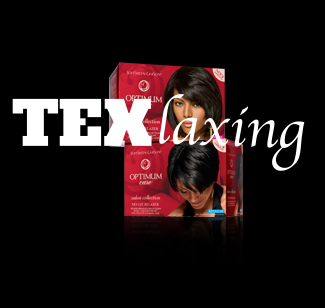All you need to know about ‘texlaxed’ hair

What is texlaxing?
This is basically intentionally underprocessing your relaxer because you want to avoid hair that is too straight (otherwise called bone straight hair).
Contents
Why texlax?
Texlaxing reduces the potential damage caused by relaxers and helps hair look fuller. This is especially for ladies with fine hair strands or scanty hair.
How to texlax
There are several ways you can achieve semi-processed hair and if you prefer, you can even combine any of them:
- Apply relaxer on hair that is very dirty. One thing you can do is to put a lot of oil on your hair.
- Not using all the activator *I personally don’t like this method but that’s just my opinion.*
- Mix your relaxer with 1 – 2 tablespoons of oil.
- Reduce total relaxing time (this is includes application AND smoothing time). Aim for 10 – 15 minutes. The longer the relaxer stays on your hair, the more processed your hair would turn out.
- Don’t comb through relaxer
It might take about 2 or 3 tries of texlaxing your hair to really decide how much texture you want left in your hair. Don’t forget that: The less time the relaxer spends in your hair, the less straight it becomes.
Cons of texlaxing
- One major problem with texlaxed hair is that you end up dealing with different textures – the bone straight relaxed ends and the textured texlaxed hair. Even the texlaxed hair might have varying degrees of texture. To reduce the variation in textures in your texlaxed hair (once you have decided how underprocessed you want your hair), try to be as consistent as possible: same person applying the relaxer, same relaxer, same procedure, same application time.
- Your hair will not be as sleek or as smooth as bone straight hair.
- It is more difficult to manage texlaxed hair than bone straight hair. You might keep getting comments like your hair is due for a retouch. Or you might even be asked if your hair is natural.
Transitioning from bone straight relaxed hair to texlaxed hair
- Trim off the bone straight relaxed ends all at once (sort of like a big chop) OR at regular intervals.
- Deep condition your hair regularly making sure you pay attention to the line of demarcation (i.e the point where the relaxed ends and the texlaxed roots meet).
- Moisturize your hair regularly.
- Do styles that stretch your hair e.g flexirod set, curl former set, roller set, blowdry (with cool air), etc.
- Try not to comb your hair when it is dripping wet. Wait till it is just slightly damp.
- Manipulate your hair gently e.g. when detangling, do it carefully and with the help of a good detangler.
Related News

6 Tips for Rocking Bold, Brightly Colored Hair
Your hair is your crowning glory, so the popular expression goes. Indeed, the way youRead More

My natural hair journey so far
Just in case you don’t follow me on social media and you missed the news,Read More


[…] me if I need to do a touch-up. When I really want a more polished look, I roller set my hair. All you need to know about ‘texlaxed’ hair Pros and cons of ‘texlaxing’ By the way, roller setting can give your hair bounce […]
[…] However, note that your hair will not be as straight as when you relax it fully. (This is called ‘texlaxing’). Rollersetting will help make it […]